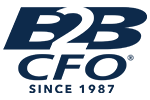
Steak N Shake
Posted on March 21, 2020 by Randal Suttles
My first audit, fresh out of Notre Dame, was Steak n Shake. At that time Steak n Shake was a 120 store restaurant chain in the Midwest. This was 33 years ago, just for context. I was selected by the senior auditor on the job to assist her with the audit. She chose me and one other (he is now CFO of a very profitable publicly held software communications company) to go with her from Indianapolis to the corporate accounting offices in Bloomington, Illinois.
Why me? My father was a CPA and had me keeping books for a couple of his clients at age 11. Back then, that meant manual sales journals, manual cash disbursements journals, and manual ledgers. No excel worksheets. No computers. Mostly an adding machine. I could, and still can, run a 10 key adding machine better than anyone, with either left or right hand. And that’s why she chose me to work on the audit.
Let me set the scene for a moment, and I will get to my point. Steak n Shake had 120 stores. All of the accounting was manual, as it was for all companies back then. IBM had not yet invented the PC, and Bill Gates was still in grade school. The Steak n Shake corporate accounting office consisted of 30 ladies, yes, all ladies, and one controller. The controller had his own office. The bookkeepers all worked in one large room, upstairs, above the warehouse and supply kitchen for the Illinois restaurants. No cubicles. Rows and rows of desks. Just a metal desk, an adding machine, and one lady for every 4 stores. 30 bookkeepers all seated in rows, 2 desks wide, 15 rows deep. For each store, she kept a sales journal, a cash receipts and disbursements journal, a fixed asset register and a general ledger. And there was lots of accounting paper, the stuff with the columns and the little squares where you hand wrote the numbers. You have seen old pictures of company offices, just like this. Rows of clerks and bookkeepers, with an adding machine (or a comptometer), hand writing letters or hand posting the books, thick black ledgers and journals. Usually a lamp on the desk, sometimes a black rotary dial phone.
My job was to use my 10 key adding machine skills to add and re-add all of the worksheets that the ladies prepared every month, that they gave to the controller, who prepared a consolidating workpaper for the balance sheet and the income statement. 120 columns wide, one column per store. It was a 6 foot wide set of worksheets. I am not kidding: six feet wide, every month, 120 stores. Prepared in pencil so mistakes could be corrected. No delete keys back then. My job was to re-add the numbers, by hand, to make sure they were accurate. You should have seen my fingers fly on that adding machine.
What’s the point, other than nostalgia? The point is that the accounting task for the 30 ladies and controller was to prepare accurate numbers for every store, and combined totals for the senior management. Basic, double entry bookkeeping, every month for management, every quarter and year end for the public shareholders. That is still the task today. Accurate numbers that have to be checked, and rechecked, so they are useful to management and owners.
The only difference today is that with computers, the numbers can be compiled more quickly (although not more accurately in many cases). I tell my clients that all we seem to have accomplished is that we can make the same basic accounting errors really, really fast. Inaccurate account coding, basic bookkeeping mistakes, incorrect account reconciliations, and sheer tardiness are still problems for most companies today, especially smaller and mid size companies. At the end of the day, the basic numbers still have to be accurate, they still have to add up, and they still must be checked. Only then are they useable for the managers, the owners, and the bankers to make sound business and cash flow decisions.
I find much of the time that the first task I have with a new client is not to evaluate the cash flow, nor try to find ways to improve it, nor begin working on margins, capital structures, forecasts, etc. The first task much of the time is to get the numbers right. In the case of Steak n Shake, they were already getting the numbers right. My job as the auditor was to confirm it. For my clients now, the first task is sometimes still to help them get the numbers right.
By the way, the Steakburgers were really good in Bloomington, Illinois at the headquarters 33 years ago. They are still really good now. I ate at a Steak n Shake in Indianapolis last week. Thanks for the memories.
Get Started With Randal
Get Your own complimentary* Discovery Analysis™ from B2B CFO®
*Complimentary for qualified business owners
